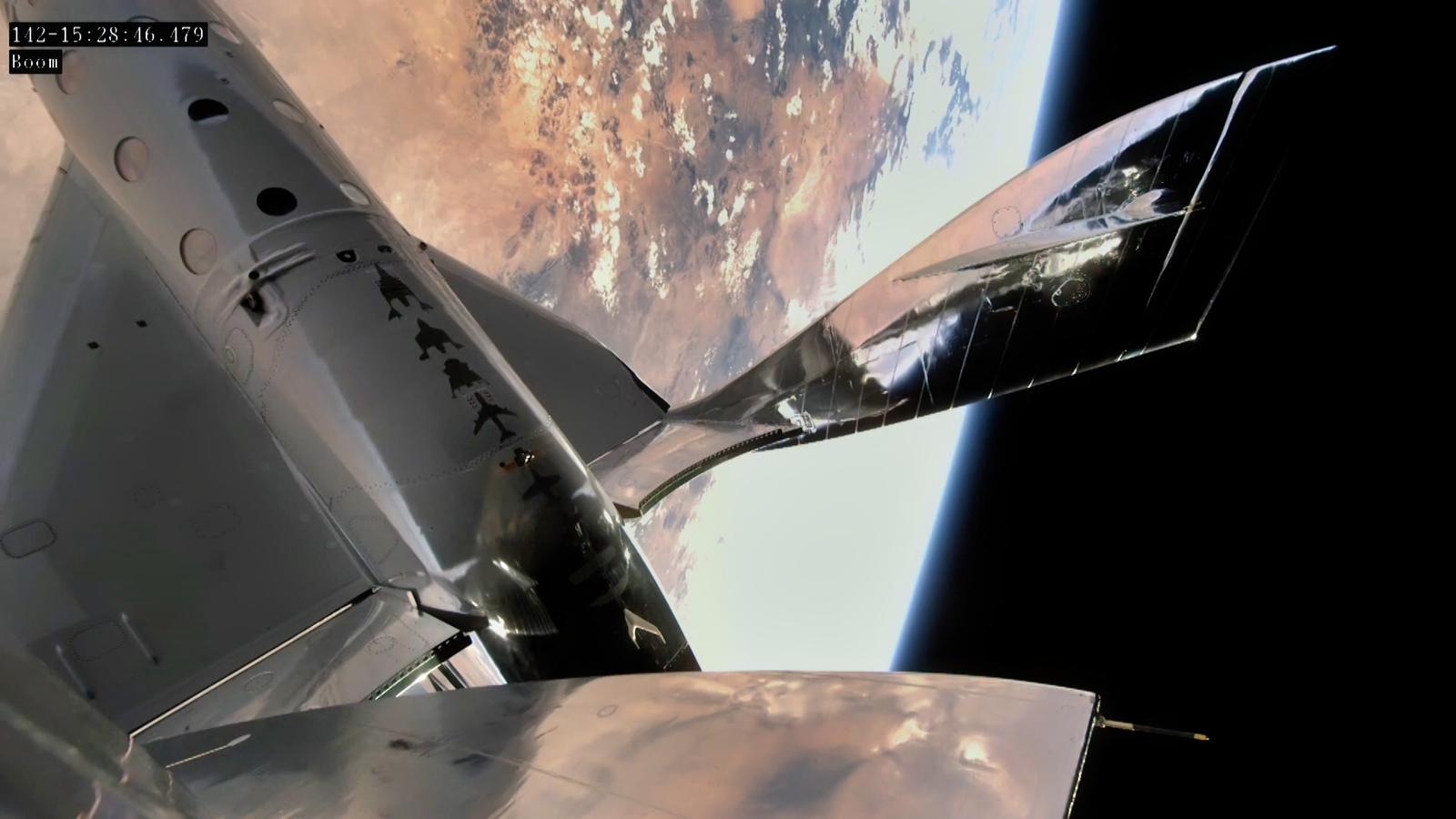Virgin Galactic’s SpaceShipTwo rocket plane crossed its 50-mile-high space boundary over New Mexico for the first time today, after months of challenges.
The trip by VSS Unity marks the first time a spacecraft has been launched so high from a New Mexico spaceport. Unity passed the 50-mile mark twice during tests at California’s Mojave Air and Space Port, in 2018 and 2019. Since then, the plane and its WhiteKnightTwo carrier airplane, dubbed VMS Eve, have been transferred to their operational home base at New Mexico’s Spaceport America.
“Today’s flight sees New Mexico become the third U.S. state to launch humans to space,” after Florida and California, Virgin Galactic said in a post-mission press release.
Virgin Galactic goes with the U.S. Air Force’s 50-mile definition for the boundary of space — rather than the internationally recognized 100-kilometer (62-mile) boundary, known as the Karman Line.
Today’s flight followed the standard profile for a SpaceShipTwo trip: The twin-fuselage Eve made an airplane-style takeoff from Spaceport America with Unity bolted to its underbelly. Around the target altitude of 44,000 feet, Unity was released from its mothership and fired up its hybrid rocket engine to rise spaceward.
Test pilots Dave Mackay and CJ Sturckow guided Unity to its peak altitude of 55.45 miles, cheered on by Virgin Galactic founder Richard Branson and other VIPs who gathered at Spaceport America.
At the top of the ride, Mackay and Sturckow experienced a few minutes of weightlessness and saw a wide swath of the American Southwest spread beneath the black sky of space. Passengers are due to get a similar experience once Virgin Galactic begins commercial flights.
Unity glided back to a runway landing at Spaceport America — and Eve’s pilots, Kelly Latimer and Michael Masucci, landed their mothership soon afterward. Virgin Galactic noted that Sturckow, a former NASA astronaut, is now the first person to take part in space launches from three states. (The others include Florida space shuttle launches and Unity’s California test flight in 2018.)
Branson noted that the drive to create the world’s first purpose-built commercial spaceport began in New Mexico 15 years ago.
’Today, we launched the first human spaceflight from that very same place, marking an important milestone for both Virgin Galactic and New Mexico,” he said. “I am proud of the team for their hard work and grateful to the people of New Mexico who have been unwavering in their commitment for commercial spaceflight from day one. Their belief and support have made today’s historic achievement possible.”
Today’s success came after months of challenges: Last December, Unity’s blastoff to space had to be aborted just moments after rocket ignition, due to an electromagnetic interference issue.
This month, a book titled “Test Gods” revealed that a faulty seal in Unity’s horizontal stabilizer had to be fixed after the rocket plane’s previous flight in February 2019. And a couple of weeks ago, Virgin Galactic had to check a maintenance issue relating to Eve’s tail. Engineers determined that the tail was good to go for today’s test.
Virgin Galactic’s schedule calls for an assessment of the flight test’s results, to be followed by another space shot with four company employees riding along as passengers. If all goes well, Branson himself would then take a ride, and a $2 million research flight for the Italian Air Force would mark the start of commercial trips for spacefliers.
Today’s test flight also had a commercial element to it: Unity carried several payloads for NASA’s Flight Opportunities program, including experiments designed to measure electromagnetic fields, study the behavior of dust in space conditions, and test technologies for doing surgery in space.
The next few months are due to bring more milestones in commercial spaceflight. Amazon CEO Jeff Bezos’ Blue Origin space venture is planning to send people on a suborbital space ride for the first time in July. One of the seats for that flight is being auctioned off, and the current high bid amounts to $2.8 million.
A privately funded orbital flight in SpaceX’s Crew Dragon is scheduled for liftoff by as early as September, and another all-civilian crew is training for a SpaceX ride to the International Space Station in January.
Lead image: VSS Unity’s shiny wings are “feathered” for its test flight over New Mexico, with a curving Earth in the background. Source: Virgin Galactic,

